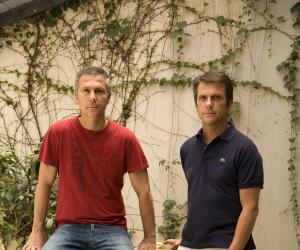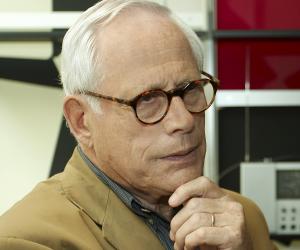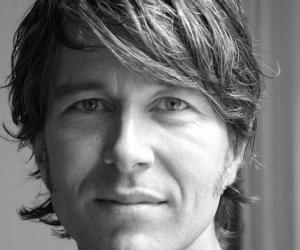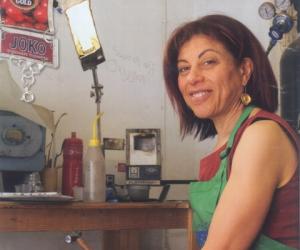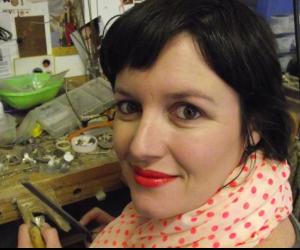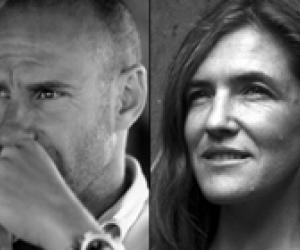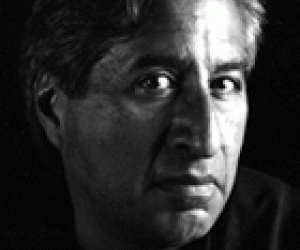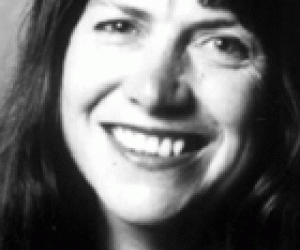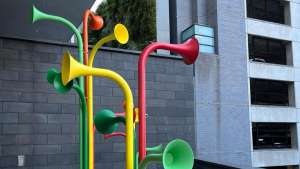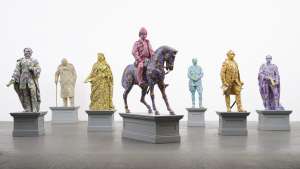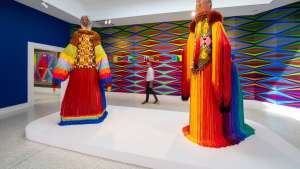First Published in
With a record 1 946 delegates coming to Cape Town to hear 55 compelling speakers from around the world, the Design Indaba has cemented its status as the premier creative event in the southern hemisphere.
This year, for the first time, the conference included three specialist indabas focusing on architecture, fashion and jewellery, identified as key sectors for economic growth. All proved extremely popular, with the Architecture Indaba bursting at the seams.
The addition of these three single-discipline indabas is further evidence of just how all-embracing the event has become. In the main conference, graphic design speaker was followed by product designer was followed by photographer was followed by digital designer was followed by trend forecaster.
The role of design in society was a thread that ran through many presentations. The Campana Brothers demonstrated how the crafts of Brazil's urban poor could be transformed into objects of international desire. Influential product designers Dieter Rams and Luke Pearson spoke out passionately against wasteful, short-lived design and argued for simplicity and sustainability. UK architect Will Alsop talked about the need to consult with the communities whose lives your designs would affect. Beverley Price and Geraldine Fenn told the jewellery indaba of empowerment projects among crafters in South Africa's poorest communities. Local architects Silvio Rech and Lesley Carstens described how they create their handmade buildings all over Africa using the skills of the local people.
Spanish-Indian, Mexican born, US raised Richard Rodriguez delighted a packed hall with his irreverent, passionate, moving take on racial and cultural intermingling.
Social awareness was a theme introduced at the very start of the conference with the first Design Indaba Charity Banquet, a fund-raising event attended by 400 high-profile guests including business leaders, politicians, media personalities and Indaba speakers.
The highlight of the evening was an auction of handmade pieces based on street furniture design, which raised R128 000 for design education.
This year's conference saw a growing recognition among the media of the Design Indaba's broader social and economic relevance.
In the latest issue of the prestigious UK publication Design Week, Lynda Relph-Knight wrote that it was "heartening to see South Africa's creative community harness Design Indaba … to explore their national identity.
"Design Indaba was set up to bring the world to South Africa as it went through a difficult rebirth. However, it is showing that we all have much to learn from each other - and that the shapers of the future aren't just from the First World," she wrote.
Locally, the Mail&Guardian's Alistair Fairweather applauded what he called the Indaba's "visceral" mission statement: "Fed up with the dead-end prospects of an economy reliant on basic commodities, its ambitious roadmap outlines a creative design industry as the beating heart of both society and the economy," he wrote.
"Rather than pouring our efforts into large-scale, pollution-causing industries, it advocates leap-frogging on the experience of the First World and becoming a creative services hub for the entire planet," added Fairweather
He wrote that although some cynics might scoff at such lofty ideals, the Indaba has "already given rise to concrete business growth in our economy."
The relevance and success of the conference was echoed by the achievements of the second Design Indaba Expo. This three-day public showcase of the best original South African design attracted 12 000 visitors, including international buyers and Indaba delegates, and provided a productive networking and marketing opportunity for exhibitors. Both established designers and emerging creatives reported an excellent response from visitors.
Students from the Cape Craft and Design Institute sold almost R19 000 worth of craft work over the three days. The institute's craft events facilitator, Xoliswa Phenya, said the students, part of the CREATESA/CCDI skills training course, received great feedback on the products exhibited.
"I am sure that the crafters received a lot of enquiries, because visitors were asking for contact details as well. I would definitely like to have a stand again next year," she said.
Ceramicist Nicola Harris praised the Expo for the support and exposure it gave designers, "The positive responses we received were overwhelming and we are in the process of following up on leads now. What's good is that they were quality connections and will hopefully turn into lasting business," she said.
Hanno de Swardt of Onnah Design, which creates original handmade footwear, said he sold well, received only positive feedback and sourced more than one new client. "I would love to be a part of the Expo again next year."
One of the Transnet Foundation Emerging Creatives, architect Felicia Sao, said the Expo was an excellent opportunity for exposure and networking. Next month she will be taking up one of two jobs offered to her during the event.
Victoria Frisch from Nivimi Glass said the Expo had provided her young company with the perfect opportunity to "dip our toes into the water."
"The feedback and contacts exceeded our expectations by far. Quality rather than quantity. The contacts are really beginning to materialise now as people get back to their offices."
Jay Smith of Jay Smith Textiles said her stand had attracted "interesting, multi-faceted visitors and enquiries that have been already followed up and could be beneficial."
"The organisation was superb and the vibe and energy fantastic. We have exhibited internationally and am happy to say our proudly South African Expo challenges on all counts," she said.
Bernard George Smith from the National Product Development Centre at the CSIR described the attendance and atmosphere at the Expo as "electric".
He said the Industrial Design stand, supported by Department of Science and Technology, had attracted a constant flow of traffic.
"Although we were not selling products, but more promoting South African Industrial Design, the response was truly fantastic. Many leads and possible collaborations were made which we are already following up on," said Smith.
International buyers were equally enthusiastic. Trevyn McDowell of Source in the UK said she felt "inspired, encouraged and impressed beyond belief at how gracefully and skillfully the whole thing was managed. It was definitely the highlight of my last 12 months."
McDowell has been travelling around South Africa sourcing local products for review by Terence Conran and an international team of buyers for Conran shops in London, Paris, New York and Japan.
She said the Expo gave her a "wonderful overview of the design suppliers in South Africa" from which she was able to prepare "a truly diverse and original" collection for review.







